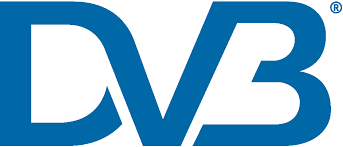Digital Video Broadcasting for Cable Systems DVB-C
- Posted by admin
- On Wednesday October 9th, 2019
- 0 Comments
Digital Video Broadcasting (DVB) is a suite of internationally accepted open standards for digital television. DVB-C is a DVB European consortium standard for the broadcast transmission of digital television over cable. This system transmits an MPEG-2 or MPEG-4 family digital audio/ video stream, using a QAM modulation with channel coding through cable channels.
The input signal is represented as a sequence of standard MPEG transport stream packets. Each packet consist of 288 bytes. First the packet is scrambled for energy dispersion and packet synchronization is modified. After that it goes through a Reed-Solomon encoder and 16 bytes are added for error protection. The individual packet length becomes 304 bytes.
The modified packets go through a convolutional interleaver with depth 12 followed by a mapping block that converts the packet’s bytes into QAM two-dimensional symbols with I and Q components. Then the two most significant bits of each symbol are differentially encoded to resolve an ambiguity introduced by the QAM modulation. DVB-C supports different modulation types defined by a number of possible QAM constellations: 16-QAM, 32-QAM, 64-QAM, 128-QAM and 256-QAM.
Next, the I and Q components of each symbol are shaped by a square-root raised cosine filter (SRRC) with a roll-off factor α = 0.15. Finally, the shaped I and Q are modulated to the carrier frequency.
The receiver performs the opposite sequence of operations. First, the RF baseband signal is level adjusted, downconverted and demodulated. For demodulation, carrier and timing synchronization is done. After that, the signal goes through the matched filter. In cable systems, the channel frequency response is not uniform and may be described as a linear filter. Therefore the demodulated signal, represented as a sequence of 2-dimensional symbols, is corrected using an equalizer.
The two most significant bits of each symbol are decoded in a differential decoder. After that, symbols from the signal are mapped to a sequence of bytes. Then the sequence of bytes goes through a deinterleaver, followed by decoding and error correction in a Reed-Solomon decoder, and then descrambling, and finally the synchronization bytes are modified. The output is a standard MPEG transport stream.



0 Comments